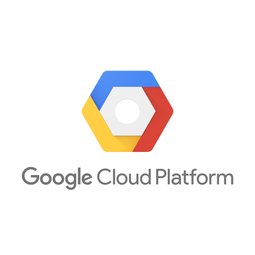Informatica
Put Potential To Work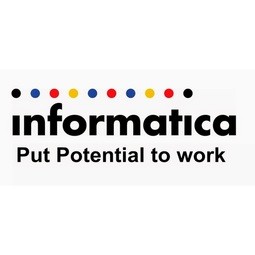
Overview
|
HQ Location
United States
|
Year Founded
1993
|
Company Type
Private
|
Revenue
$1-10b
|
|
Employees
1,001 - 10,000
|
Website
|
Twitter Handle
|
Company Description
Informatica helps you make data ready for use in any way possible, so you can put truly great data at the center of everything you do. Working with a robust ecosystem of more than 400 global partners—including the leading systems integrators, resellers, and ISVs—Informatica enables you to access, integrate, and Trust your information assets and receive maximum value from your investment.
IoT Solutions
The privacy and security implications of a network of devices that tracks our preferences, our financial transactions, our location, and our health may seem alarming. The possibilities of using that data to glean deeper insight into human nature, however, are limitless.
“I think there are certainly lots of things that we have to be careful of, like privacy, in these oceans of data,” says Rick Smolan, former photographer for Time, Life, and National Geographic and creator of The Human Face of Big Data project and book. “I deeply believe that big data is going to have 1,000 times more impact than the Internet on our lives.”
Using big data for good, not evil
We may be in the “caveman era of big data,” as Smolan calls it, but manufacturers and researchers are already finding myriad ways to use big data to make lives better. He provides these examples:
- Belkin customers who use their Conserve Insight Energy Use Monitor can see how much energy their devices and appliances use. The monitor shows operation costs and the amount of carbon dioxide produced by the electricity they consume.
- Progressive Casualty Insurance Company can install its Snapshot device in your car to track your speed, location, driving habits, and number of people in your car. This can help parents ensure their teen drivers are safe behind the wheel. Progressive will also lower your insurance rates if you prove to be a safe driver.
- Researchers at Manchester University in the United Kingdom have also created a helpful tool. They invented a carpet embedded with sensors that can immediately detect when someone falls and may be able to predict the likelihood of a future fall. Thanks to this innovative solution, seniors can safely live in their own homes instead of moving into managed care.
Device data as opportunity
Machine data presents an opportunity for your organization too. The challenge is to communicate the value of Machine Data to your customers. For instance, utilities use Smart Meters to measure customers’ consumption more accurately and at more frequent intervals.
This provides better visibility to customers into consumption patterns during the month. Logistics and delivery firms track traffic and weather patterns to develop more efficient delivery routes that get packages to customers’ doors more quickly.
Ultimately, as more devices connect to the Internet of Things, your organization will be able to delve into Machine Data and find out how to make your customers’ lives better. Big data is an opportunity, rather than a burden.
“I think someday we’ll look back at 2013 as the year that our lives and our world started to change,” says Smolan. “Big data utilization is giving us this real time feedback loop we’ve never had before. I’m hoping it’s what will enable us as a species to address some of the biggest challenges that we face going forward.”
“I think there are certainly lots of things that we have to be careful of, like privacy, in these oceans of data,” says Rick Smolan, former photographer for Time, Life, and National Geographic and creator of The Human Face of Big Data project and book. “I deeply believe that big data is going to have 1,000 times more impact than the Internet on our lives.”
Using big data for good, not evil
We may be in the “caveman era of big data,” as Smolan calls it, but manufacturers and researchers are already finding myriad ways to use big data to make lives better. He provides these examples:
- Belkin customers who use their Conserve Insight Energy Use Monitor can see how much energy their devices and appliances use. The monitor shows operation costs and the amount of carbon dioxide produced by the electricity they consume.
- Progressive Casualty Insurance Company can install its Snapshot device in your car to track your speed, location, driving habits, and number of people in your car. This can help parents ensure their teen drivers are safe behind the wheel. Progressive will also lower your insurance rates if you prove to be a safe driver.
- Researchers at Manchester University in the United Kingdom have also created a helpful tool. They invented a carpet embedded with sensors that can immediately detect when someone falls and may be able to predict the likelihood of a future fall. Thanks to this innovative solution, seniors can safely live in their own homes instead of moving into managed care.
Device data as opportunity
Machine data presents an opportunity for your organization too. The challenge is to communicate the value of Machine Data to your customers. For instance, utilities use Smart Meters to measure customers’ consumption more accurately and at more frequent intervals.
This provides better visibility to customers into consumption patterns during the month. Logistics and delivery firms track traffic and weather patterns to develop more efficient delivery routes that get packages to customers’ doors more quickly.
Ultimately, as more devices connect to the Internet of Things, your organization will be able to delve into Machine Data and find out how to make your customers’ lives better. Big data is an opportunity, rather than a burden.
“I think someday we’ll look back at 2013 as the year that our lives and our world started to change,” says Smolan. “Big data utilization is giving us this real time feedback loop we’ve never had before. I’m hoping it’s what will enable us as a species to address some of the biggest challenges that we face going forward.”
Key Customers
JLL, ConocoPhillips, Land O’Lakes, AsianPaints, CEMEX, Emerson, Siemens
IoT Snapshot
Informatica is a provider of Industrial IoT platform as a service (paas), application infrastructure and middleware, analytics and modeling, cybersecurity and privacy, and functional applications technologies, and also active in the finance and insurance industries.
Technologies
Use Cases
Functional Areas
Industries
Services
Technology Stack
Informatica’s Technology Stack maps Informatica’s participation in the platform as a service (paas), application infrastructure and middleware, analytics and modeling, cybersecurity and privacy, and functional applications IoT Technology stack.
-
Devices Layer
-
Edge Layer
-
Cloud Layer
-
Application Layer
-
Supporting Technologies
Technological Capability:
None
Minor
Moderate
Strong

Supplier missing?
Start adding your own!
Register with your work email and create a new supplier profile for your business.
Case Studies.

Case Study
Data Warehouse for Sales and Inventory Management | Dial
Dial needed a solution that would: improve sales performance, establish more effective sales promotions and product distribution strategies, reduce IT support and increase agility, and lower costs: new requirements for data were expensive and slow to turn around.

Case Study
Hardware Retailer Uses Data Warehouse to Track Inventory
Ace tracked which products retailers ordered, when they were ordered and shipped. However, the company could not track or forecast actual sales. Data used for reporting was up to a one-week old, owing to performance and data cleansing issues. Requirement to integrate wholesale and inventory data with POS data to help drive key business decisions, improve category management, lower inventory costs and optimize pricing. Reliance on custom coding to integrate POS data was excessively resource intensive and led to major performance constraints.
Case Study
Emerson Process Management
Emerson's old address verification systems couldn't handle language barriers and non-standardized address formats, which proved to be a major obstacle in dealing with international address validation. Emerson needed an address verification system that would cover their expansive list of countries and native character sets, provide superior customer support and be simple and cost-effective to implement and manage.

Case Study
Transforming Complex Technology Into Extraordinary Business Performance
• Lack of complete visibility into status of individual transactions• Absence of consolidated view to manage operations and optimize use of cash reserves• Reliance on a slow, expensive, and outsourced process to develop, test, and deploy new transaction formats

Case Study
Streamlining Pipeline Operations and Customer Onboarding with March Networks
March Networks, a leading provider of IP video surveillance software and systems, was facing challenges with its legacy data architecture. The company had numerous point-to-point integrations that were difficult to maintain and often required custom coding. This complex web of integrations was slowing down the company's operations and making it difficult to streamline processes. The company decided to implement Salesforce CRM to support its customer pipeline, but the integration between Salesforce and SAP, the system of record for their accounts, was critical and complex. The company also needed real-time integrations to support its website and online portal, which were tied to Salesforce. The challenge was to modernize the company’s data processes and applications to align with March Networks’ growth ambitions, while also making integration processes more reliable and less prone to failure.

Case Study
Leveraging IoT to Combat Homelessness: A Case Study on Community Technology Alliance
The U.S. Department of Housing and Urban Development (HUD) reports over half a million homeless people on the streets in the United States on any given night. The Community Technology Alliance (CTA) has been working since 1991 to collect data on homelessness and match individuals to available housing and services. However, as CTA's mission evolved, it faced the challenge of enabling housing providers and human services agencies to exchange data, eliminating the need for clients to contact multiple organizations or provide their information multiple times. CTA also aimed to help communities comply with the Homeless Emergency Assistance and Rapid Transition to Housing (HEARTH) Act of 2009, which requires a coordinated or centralized assessment and placement system to prioritize access to housing and services. Compliance is demonstrated using an Annual Performance Review (APR) that community agencies submit to HUD. Communities that don’t comply risk losing their homeless assistance grants.
Similar Suppliers.
---nasdaq--amzn_14.jpg)
Supplier
Amazon Web Services
Amazon Web Services has developed the managed cloud platform AWS IoT to let connected devices easily and securely interact with cloud applications and other devices. AWS IoT can support billions of devices and trillions of messages, and can process and route those messages to AWS Endpoints and to other devices reliably and securely. With AWS IoT, your applications can keep track of and communicate with all your devices, all the time, even when they aren’t connected.On top of this platform, AWS also offers a variety of analytics solutions by AWS or third-party suppliers that can help meet all kinds of needs related to data analysis.
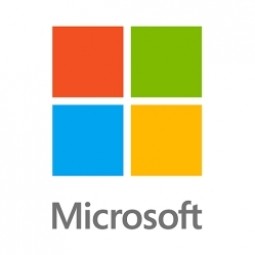
Supplier
Microsoft
Microsoft develops, manufactures, licenses, supports and sells computer software, consumer electronics and personal computers and services. Its best known software products are the Microsoft Windows line of operating systems, Microsoft Office office suite, and Internet Explorer and Edge web browsers.Year Founded: 1975Revenue: $93.6 billion (2014)NASDAQ: MSFT
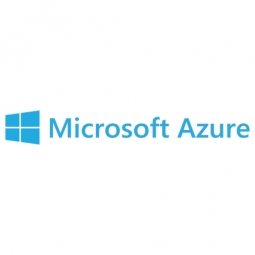
Supplier
Microsoft Azure (Microsoft)
Microsoft Azure is a Cloud Computing platform and infrastructure created by Microsoft for building, deploying, and managing applications and services through a global network of Microsoft-managed data centers. It provides both PaaS and IaaS services and supports many different programming languages, tools and frameworks, including both Microsoft-specific and third-party software and systems. Azure was announced in October 2008 and released on 1 February 2010 as Windows Azure, before being renamed to Microsoft Azure on 25 March 2014.
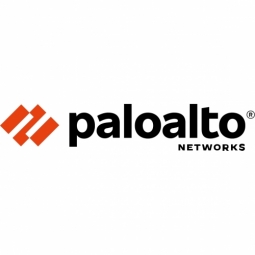
Supplier
Palo Alto Networks
Palo Alto Networks, the global cybersecurity leader, is shaping the cloud-centric future with technology that is transforming the way people and organizations operate. The mission is to be the cybersecurity partner of choice, protecting the digital way of life. They help address the world's greatest security challenges with continuous innovation that seizes the latest breakthroughs in Artificial Intelligence, analytics, automation, and Orchestration. By delivering an integrated platform and empowering a growing ecosystem of partners, they are at the forefront of protecting tens of thousands of organizations across clouds, networks, and mobile devices. Their vision is a world where each day is safer and more secure than the one before.




